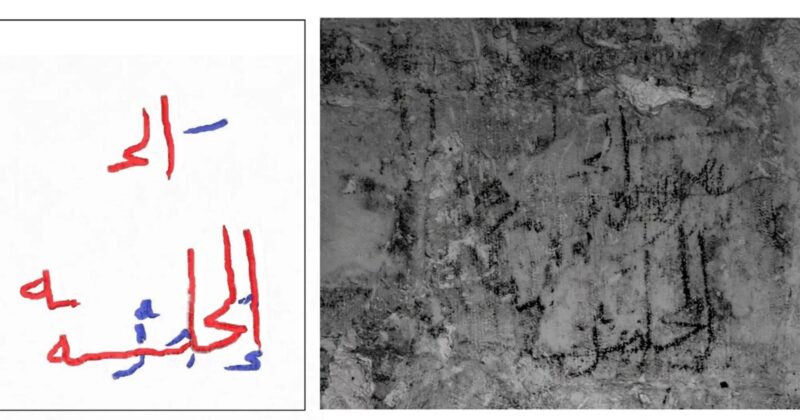Archeologists from Austria and Israel recently unveiled a series of mysterious, centuries-old inscriptions at the site believed to be the location of the Last Supper in Jerusalem.
The recent discovery was announced by the Austrian Academy of Science (OeAW) on April 16, just in time for Easter. With the help of the Israel Antiquities Authority (IAA), archeologists were able to identify some 40 pieces of graffiti, including five coats of arms.
The Room of the Last Supper, also known as the Cenacle, is located on Mount Zion in Jerusalem. Pilgrims have venerated the site since at least the fourth century, while Crusaders later built a hall around it in the 12th century.
Most of the inscriptions uncovered by the team date back to the Middle Ages. Researchers believe the site attracted numerous international tourists over the years, many of whom left messages in their native languages.
Photos released by the team show various coats of arms and writings in ancient languages. A drawing of a scorpion was also found, which presumably dates back to 1523, when Suleiman the Magnificent took over the Cenacle and converted it into a mosque.
The inscriptions were left by pilgrims from Germany, Serbia, the modern day Czech Republic, Syria and Armenia, OeAW announced. The majority of the messages were left by Arabic-speaking Christians, however.
One of the inscriptions contained a depiction of the Last Supper, including a goblet, a platter, and a round piece of bread above a German coat of arms. Researchers also found an Armenian inscription reading “Christmas 1300,” as well as an Arabic inscription reading “ya al-Ḥalabīya,” Fox News reported.
“Based on the double use of the feminine suffix ‘ya’, the researchers concluded that this is a graffito of a female Christian pilgrim from the Syrian city of Aleppo, making it a rare material trace of pre-modern female pilgrimage,” OeAW said of the inscription.
Researchers were able to document the findings using multispectral photography and Reflectance Transformation Imaging (RTI) before later analyzing the images in a lab. Analysts then “digitally merged” both photographic techniques in order to make the inscriptions visible.
In a press release, historian Ilya Berkovich noted that researchers were rather surprised at the number of regions represented and diversity of languages. “When put together, the inscriptions provide a unique insight into the geographical origins of the pilgrims,” Berkovich said. “This was far more diverse than current Western-dominated research perspective led us to believe.”
The latest discovery comes just weeks after archeologists found evidence of a garden consistent with biblical descriptions at the Church of the Holy Sepulchre in Jerusalem. Researchers excavating the complex, located where Jesus Christ was crucified and buried, found evidence of olive trees and grapevines. The specimens were found to be at least 2,000 years old.
The discovery matches the New Testament verse John 19:41, which reads, “Now in the place where he was crucified there was a garden, and in the garden a new tomb in which no one had yet been laid.”

